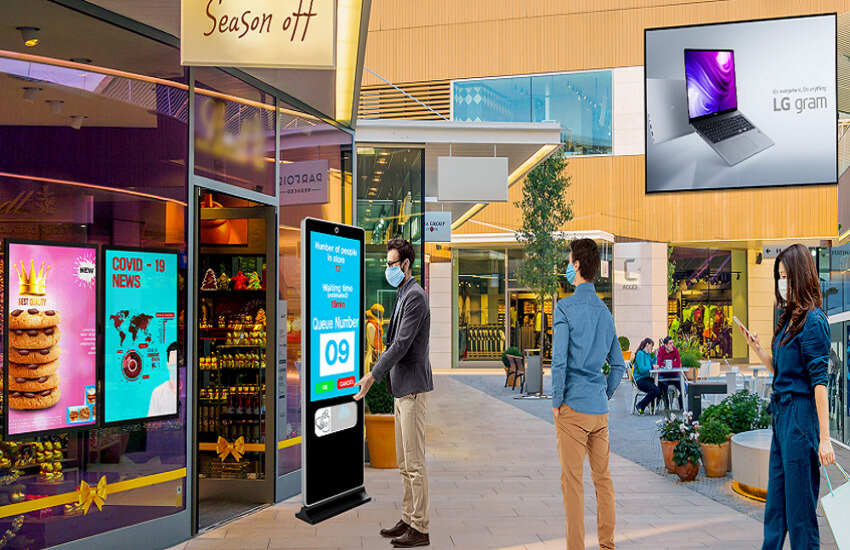
Navigating large venues can be a daunting experience for visitors. Whether it’s a sprawling hospital, a multi-level convention center, a sports stadium, or a large corporate complex, the ability to move through the space confidently and efficiently is crucial. This is where digital signage steps in as an essential solution. Beyond simple direction-giving, it transforms how visitors experience the venue, making it smoother, faster, and more intuitive.
Enhancing Wayfinding with Interactive Maps and Directories
One of the most powerful features of the best digital signage in large venues is the ability to provide interactive maps. These touchscreen displays allow users to input their destination and receive a clear, step-by-step route. Unlike traditional static maps, digital versions can update in real-time, adapting to temporary closures, event-specific setups, or changes in venue layout.
Interactive directories also help users find departments, booths, seating sections, or rooms without confusion. This reduces the burden on staff and enhances visitor independence, improving overall satisfaction.
Delivering Real-Time Updates and Notifications
In fast-paced environments like airports, trade shows, and hospitals, things change frequently. Digital signage allows venue operators to broadcast real-time updates about changes in schedules, room assignments, delays, or emergency alerts. This immediate communication capability keeps everyone informed and helps prevent frustration or confusion.
In emergencies, digital signage becomes a lifeline, guiding visitors to exits or safety zones with visually prominent and easy-to-follow instructions.
Improving Visitor Experience with Personalized Messaging
Digital signage in large venues can also be personalized for scheduled events. For example, during a business conference, screens at entrances and key junctions can display welcome messages with company logos or direct attendees to specific breakout rooms.
In a healthcare facility, screens might display patient names with appointment times and directions, maintaining privacy while offering a guided experience. This tailored content makes guests feel seen and valued, elevating the overall visitor experience.
Reducing Staff Load and Operating Costs
Traditional wayfinding often requires a significant human resource investment, with staff stationed at various points to provide directions. By deploying digital signage, venues can reallocate staff to higher-value roles while ensuring that visitors are still supported.
Automated guidance through strategically placed screens reduces the need for printed materials and temporary signs, contributing to both cost savings and environmental sustainability.
Integrating Multilingual Support for Diverse Audiences
Large venues frequently serve international and multicultural audiences. Digital signage can support multiple languages, making navigation easier for non-native speakers. Visitors can select their preferred language on interactive displays or be guided automatically through geolocation settings.
This inclusive approach eliminates barriers and creates a more welcoming environment, especially in globally frequented venues such as airports, tourist attractions, and academic institutions.
Strategically Placed Signage for Maximum Impact
The effectiveness of digital signage depends heavily on placement. Screens positioned at key decision points like building entrances, elevator lobbies, corridor intersections, and escalator banks can guide foot traffic efficiently. These displays should be visually prominent and intuitive to use, ensuring that even first-time visitors can find their way without hesitation.
Proper placement not only improves flow but also prevents congestion in high-traffic areas, contributing to a smoother and more organized venue experience.
Providing Accessibility for All Visitors
Modern digital signage solutions also cater to visitors with disabilities. Touchscreens can offer voice assistance, text-to-speech options, and adjustable font sizes. Venues can include ADA-compliant features that allow differently-abled individuals to navigate the space without needing additional help.
This attention to accessibility reflects a commitment to inclusivity and improves the venue’s overall reputation.
Incorporating Venue Branding and Sponsor Promotions
While the primary purpose of digital signage in large venues is guidance, it can also serve as a branding and monetization tool. Screens can display venue branding, partner logos, or rotating sponsor content alongside wayfinding features.
For instance, a convention center might display sponsored content relevant to the event, while a stadium might promote concessions or merchandise near specific gates. This dual-purpose strategy enhances brand visibility while maintaining functionality.
Supporting Event-Specific Configurations
Large venues often host varying events with different spatial arrangements. Digital signage allows operators to update layouts, routes, and directions in real-time based on the current event’s setup. Attendees are guided through customized experiences without confusion.
For example, a music festival might use signage to direct attendees to different stages, food courts, or merchandise zones depending on the time of day or performer schedules.
Conclusion
Digital signage is a game-changer in managing visitor flow in large venues. It enhances wayfinding, reduces confusion, provides real-time information, and personalizes the guest experience. With strategic placement and thoughtful content design, digital signage ensures that every guest can move confidently through complex spaces with minimal assistance. As venues continue to expand in scale and complexity, adopting digital signage isn’t just an upgrade; it’s a necessity.